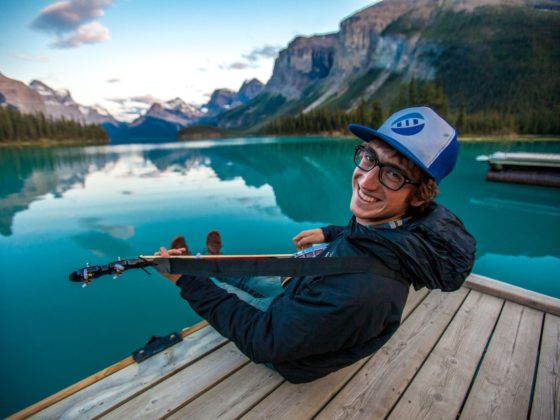
ENCOMPASSING 4,200 SQUARE MILES of lakes and waterfalls, peaks and tundra, valleys and forest, Jasper is by far the wildest and largest national park in the Canadian Rockies. Butting up against the Great Divide in far western Alberta, it’s a gateway to the biggest icefield in the Canadian Rockies and home to the kind of wildlife that frequents fairy tales — wolves, grizzlies, endangered caribou.
This is a place where you can venture beyond your comfort zone, exploring the park’s remote corners by bike, canoe, and foot. And it’s a place where incredible views like those below look even better in real life. Don’t believe us? Come and see for yourself.
1. Glacier Skywalk
Find it: 1.25 hours southeast of Jasper via the Icefields Parkway
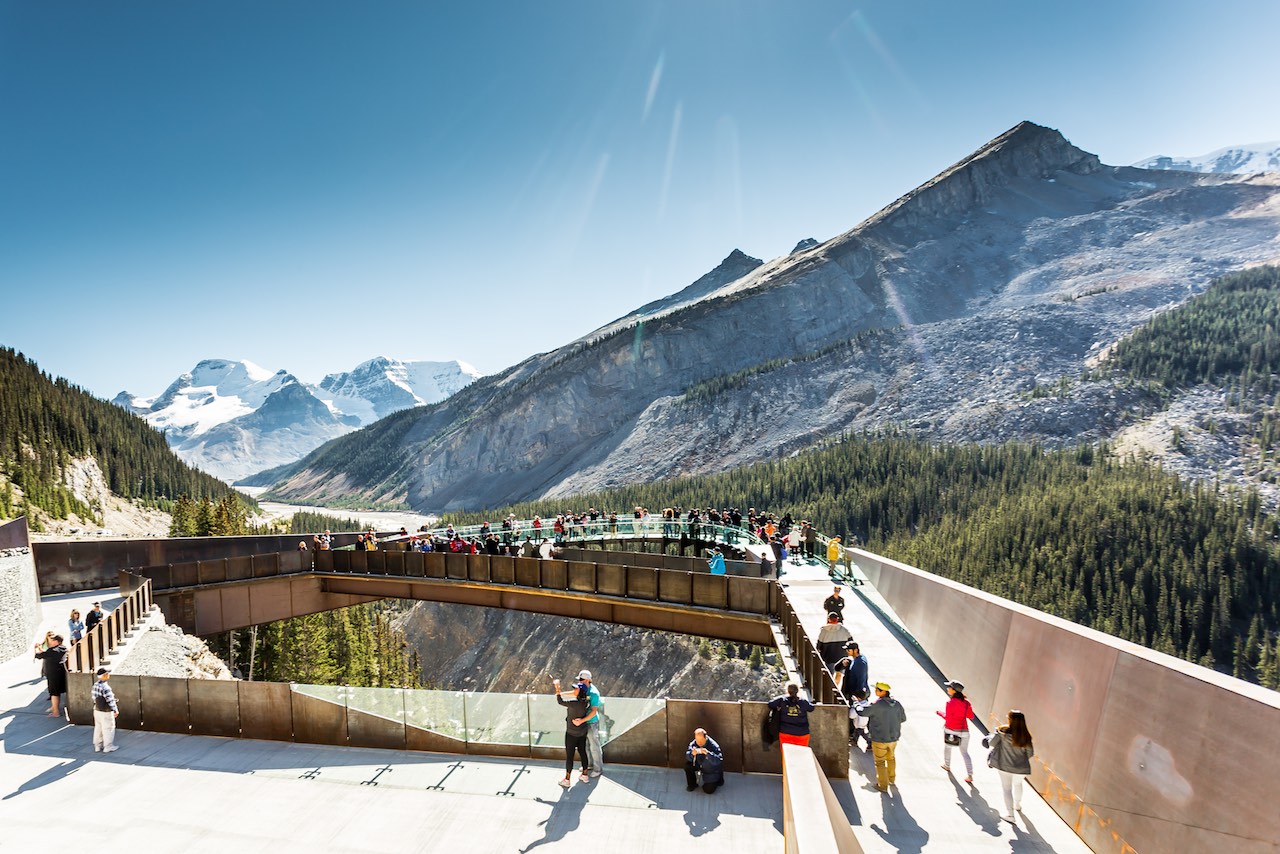
Photo: Neill Zeller for Travel Alberta

Photo: Sean Thonson for Travel Alberta
The Glacier Skywalk opened in 2014 to architectural awards and visitors clinging to each other as they made that first step onto the giant glass platform nearly 1,000 feet over the Sunwapta Valley. Come here and you’ll experience the river rushing far below, ravens and the occasional eagle circling overhead, as your audio guide details the scene around you. The Skywalk is open May – October; arrive in the early morning or late afternoon to have it nearly to yourself.
From the Skywalk, a five-minute drive takes you to North America’s most visited glacier: Athabasca. It’s so eerie and beautiful here, the dark rocks uncovered by the receding glacier giving the scene an otherworldly feel. Walk the grey-blue ice with a guide from Athabasca Glacier Icewalks, or head out on a giant, six-wheeled, all-terrain Ice Explorer.
Five minutes past Athabasca Glacier and you’re at the trailhead to one of the finest half-day hikes in the Canadian Rockies. The Wilcox Pass hike is five miles return and rises above the treeline in about 15 minutes, which means panoramic mountain views are yours in no time. You’ll climb the edge of a gully, along a stream, and into a high alpine valley famous for its summer wildflowers and bighorn sheep. Look out for both!
2. Athabasca Falls
Find it: 30 minutes south of Jasper via the Icefields Parkway and 93A
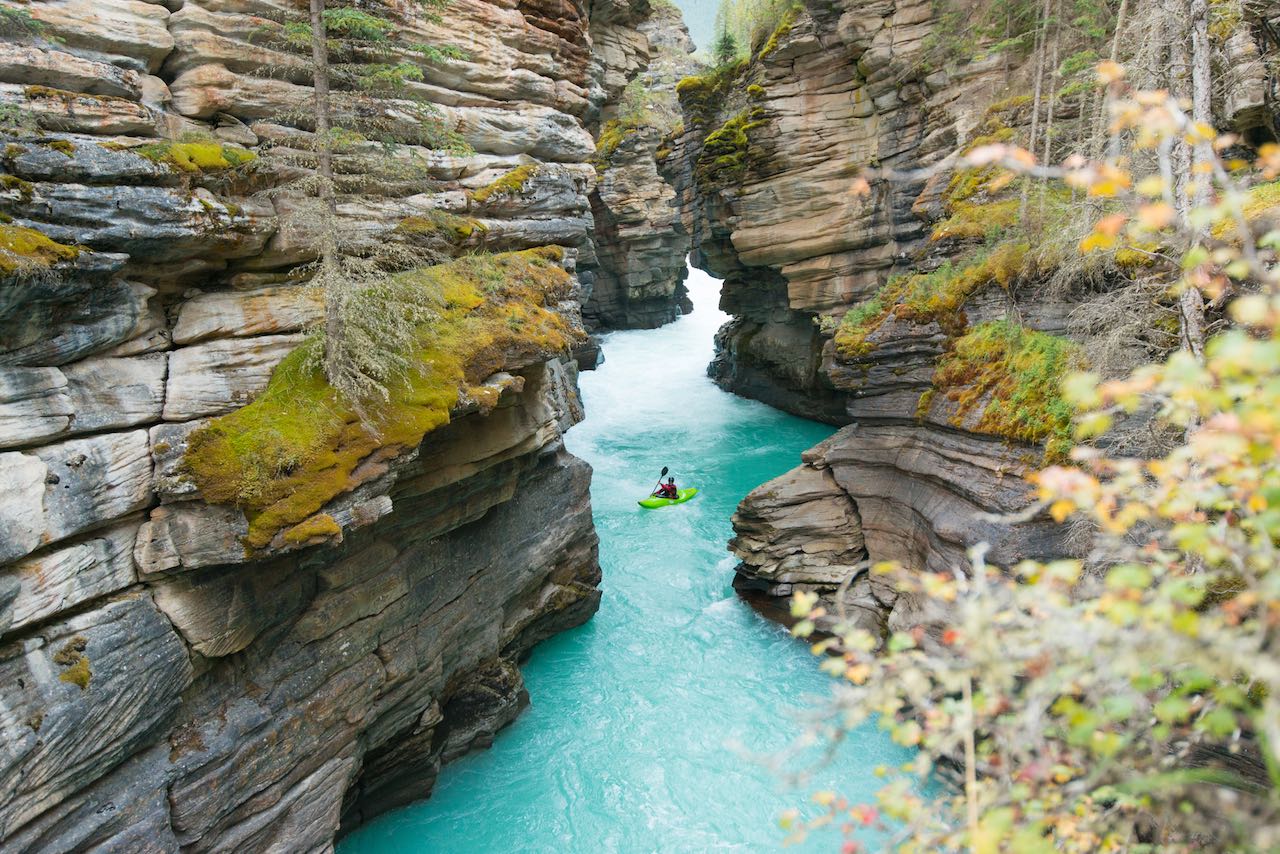
Photo: Jeff Bartlett for Travel Alberta
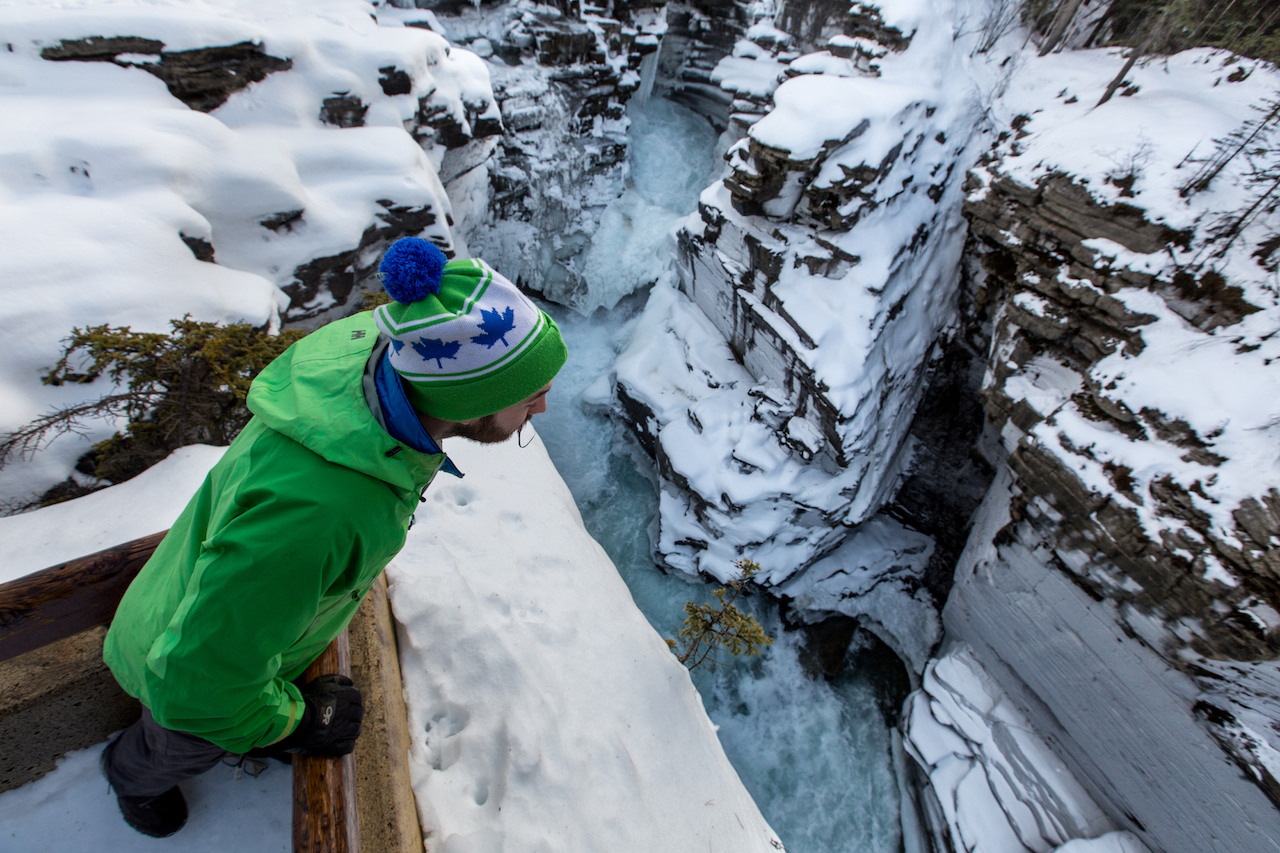
Photo: Adam Greenberg for Parks Canada
It’s the sheer force of the water as it powers into the gorge below that makes Athabasca Falls, one of the most powerful waterfalls in the Canadian Rockies, so impressive. This is also where many of the park’s whitewater rafting tours start. Relatively gentle Class II rapids produce some beginner thrills as you float down the upper Athabasca River, with groups typically ending their trip at beautiful Old Fort Point just outside town. I’ve seen families — little kids, grandmas — on rafting trips along the milky blue water, and everyone always looks like they’re having so much fun.
3. Medicine Lake
Find it: 30 minutes east of Jasper via Maligne Lake Rd

Photo: Canadian Photo Adventures
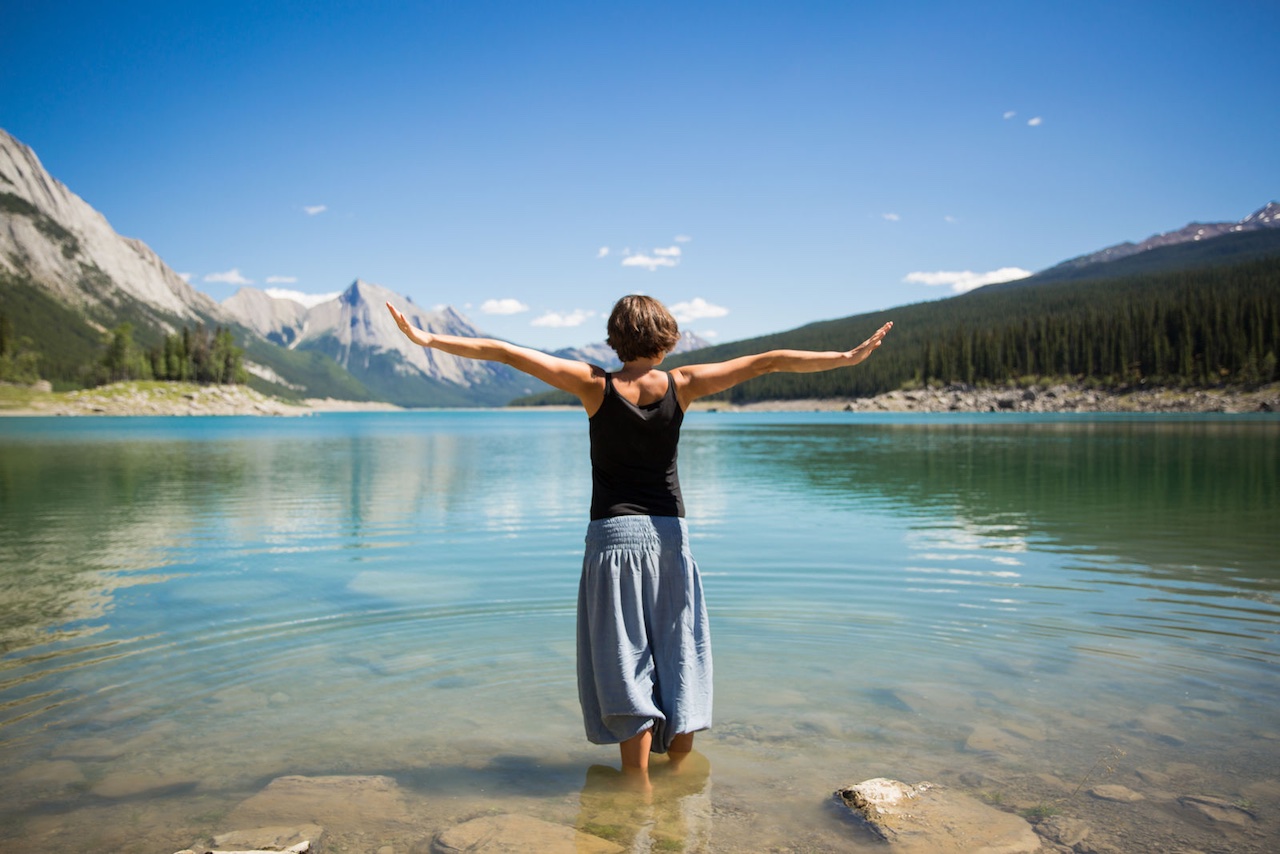
Photo: Ben Morin for Parks Canada
This isn’t your average Canadian lake. This is a magic lake. Or, that’s how the First Nations peoples who used to pass through the valley explained how its waters practically disappeared each fall, only to reappear the next summer.
One of the largest known sinking rivers in the Western Hemisphere, Medicine Lake is drained like a bathtub by a series of sinkholes, but only when they’re no longer overwhelmed by summer’s glacial meltwater. The water then runs through what’s thought to be the largest inaccessible limestone cave system on the planet, and it doesn’t resurface till ten miles downstream at Maligne Canyon (see below). Along the lake’s edge, there’s an easy trail to walk. Skip some rocks and look for pikas ‘eeping’ among the boulders.
4. Maligne Canyon
Find it: 15 minutes northeast of Jasper via Maligne Lake Rd
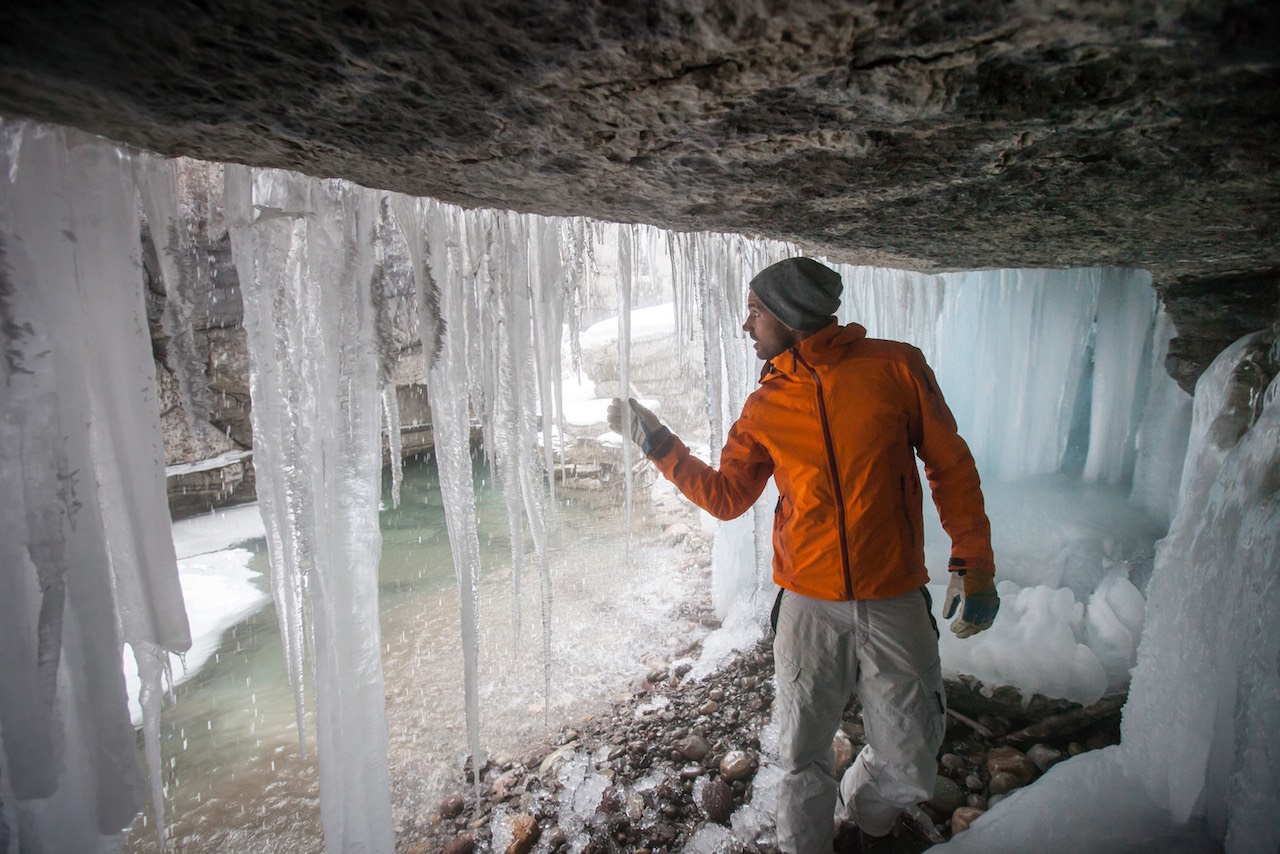
Photo: Destination Canada

Photo: Ryan Bray for Parks Canada
This narrow canyon has been forming for the past 160 million years, with rushing water relentlessly wearing down the limestone so that the site is always (slowly) changing. The upper canyon is one of the most popular interpretive trails in the park, so don’t expect solitude along its bridges in the summer. If that’s what you’re looking for, continue down to the lower canyon, which eventually leads to the Athabasca River. There are plenty of polished boulders by the water where you can lie down and catch some rays, and all that moisture creates a perfect surrounding setting of mushrooms, ferns, and moss.
In winter, the falls freeze and local outfitters take people snowshoeing and ice climbing in what is one of the deepest river canyons in the Canadian Rockies. The truest adventurers climb the sheets of ice — frozen pillars of blue and green extending 100 feet high — but anyone can strap on ice cleats to explore the canyon’s frosted walls and secret caves.
5. Icefields Parkway
Find it: aka Highway 93, which starts from Jasper and runs south
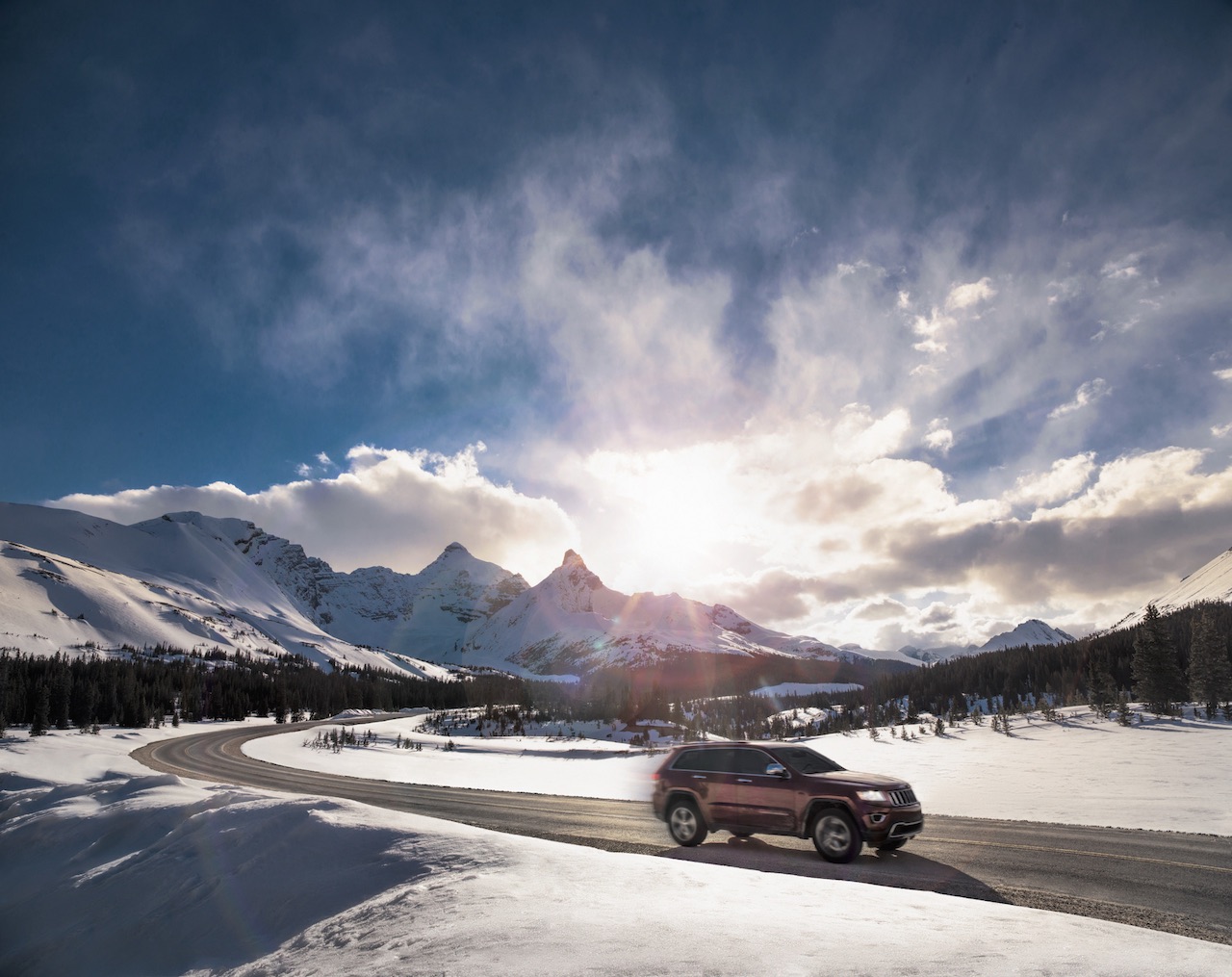
Photo: Roth & Ramberg for Travel Alberta
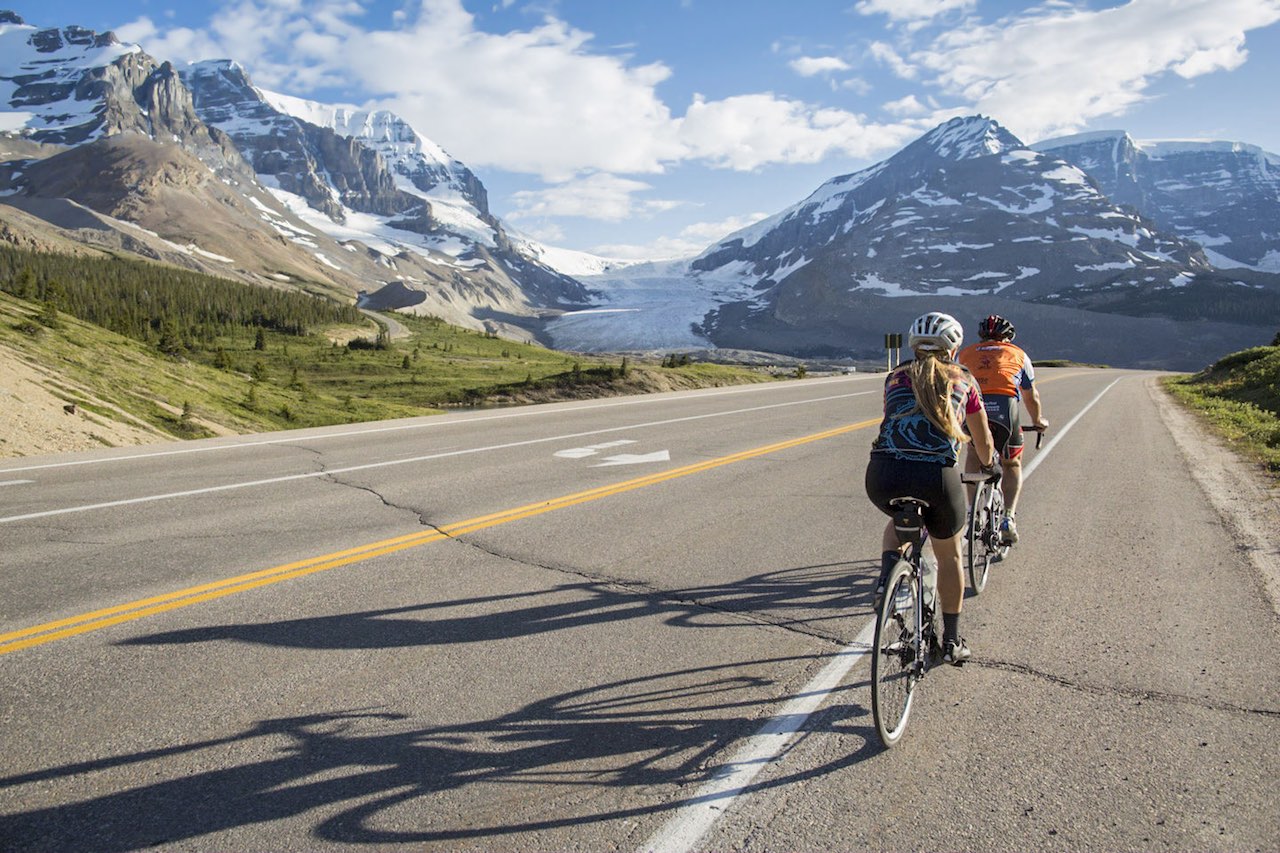
Photo: Rogier Gruys for Parks Canada
Connecting Jasper to Banff National Park, the 165-mile-long Icefields Parkway was named by National Geographic as the “drive of a lifetime.” That it is. But even though it threads through some of the biggest, grandest mountains in the Canadian Rockies, we aren’t talking about a scary drive full of hairpin turns. The only noticeable steep section is Big Bend. It comes a little after you’ve passed the Athabasca Glacier, but it’s a sweeping switchback so it’s actually a reasonable grade. From mile zero, Jasper, the Big Bend runs downhill, so if you’re a cyclist, maybe ride the Parkway from Jasper to Banff?
At mile 23, look out for Kerkeslin Goat Lick. If you’re lucky you might just spot — yes — a couple of mountain goats right by the road. Up next are Athabasca and Sunwapta Falls, and then you’re among the great collective scoop of amazingness that is the Glacier Skywalk, Athabasca Glacier, and Wilcox Pass before the Parkway sweeps down to Big Bend. What else can you see along the Parkway? Dozens of glaciers, turquoise lakes, mountains so big and glorious your neck hurts from looking up at them. I’ve also seen the best double rainbow of my life here, bighorn sheep staging a sit-in in the middle of the road, and a couple grizzly bears munching dandelions.
6. Talbot Lake
Find it: 25 minutes north of Jasper via the Yellowhead Highway
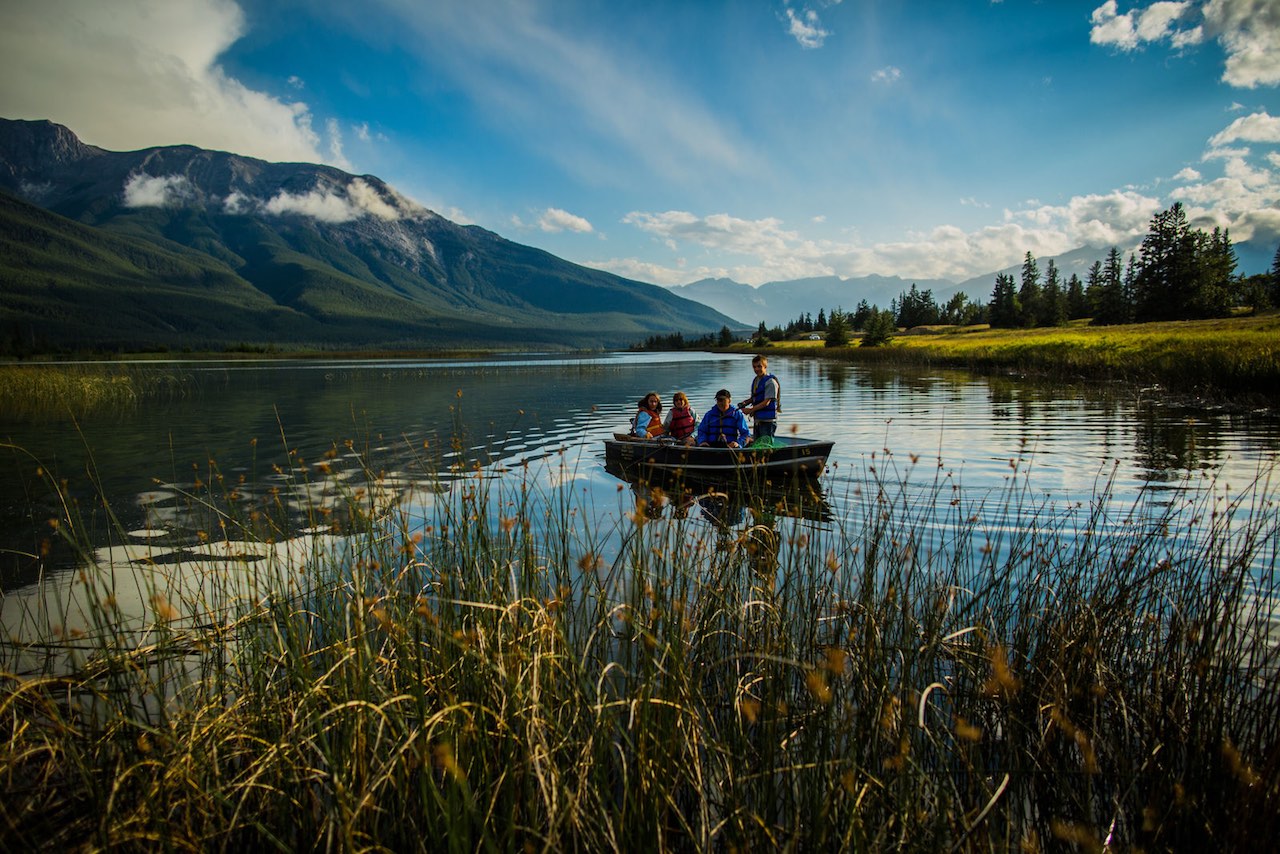
Photo: Ben Morin for Parks Canada
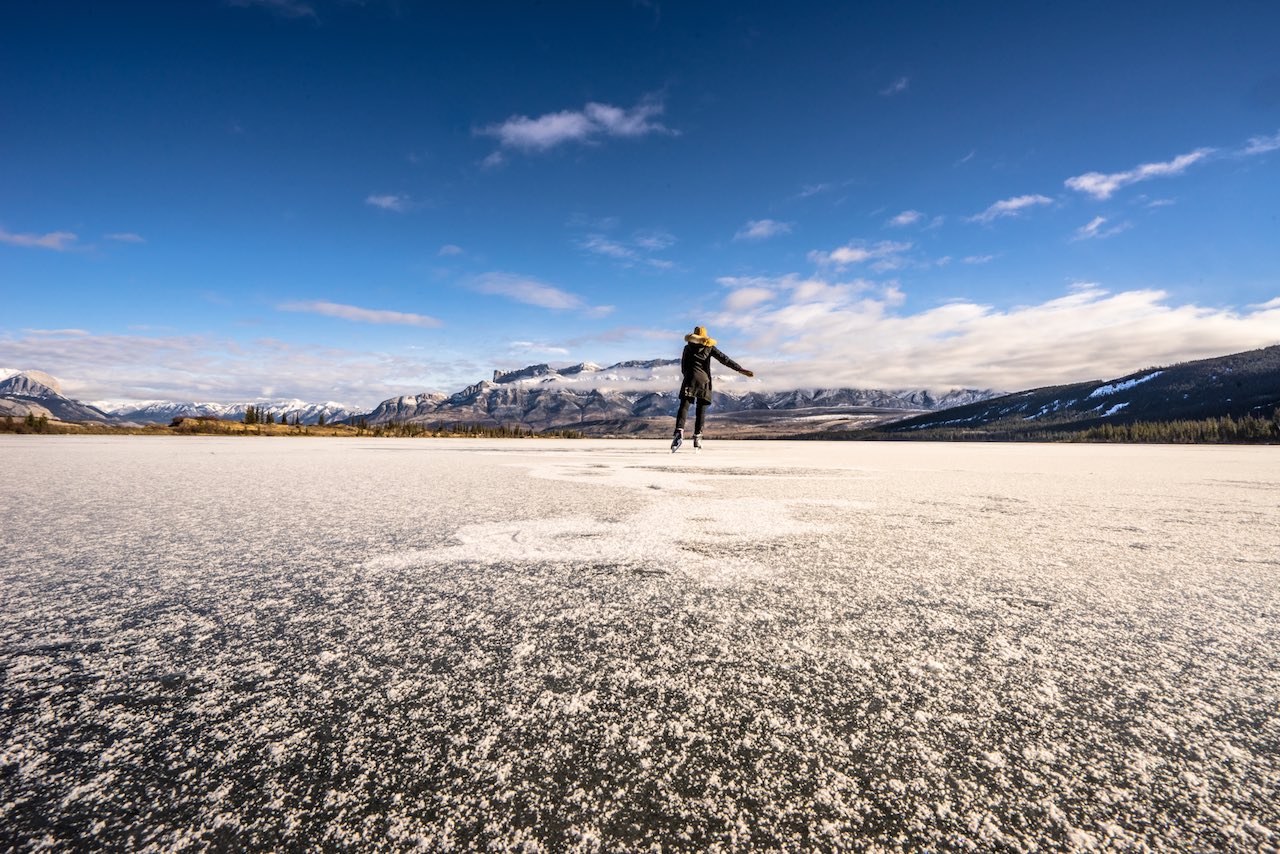
Photo: Jon Sinclair for Travel Alberta
Windsurfing in the middle of the Canadian Rockies? Yep. In summer, the hardiest make the most of the winds that rip through the Athabasca Valley to sail on Lake Talbot against the beautiful backdrop of the Miette Range. Miette’s peaks include Morro, touted as one of the best Jasper day hikes you won’t find on the hiking maps. Come winter, when Talbot typically freezes over, this can be a prime skating spot. Ask a local about lake conditions before heading out, take our advice and go late in the afternoon — imagine seeing the pinks and golds of a winter sunset spilling onto mountains blanketed in white while you skate.
Right across from Talbot, on Jasper Lake — which is actually just a really wide, really shallow part of the Athabasca River — is a unique sand dune ecosystem, the only one of its kind in the Canadian Rockies. It was formed during the last ice age.
7. Aurora borealis
Find it: Lighting up the sky across the park
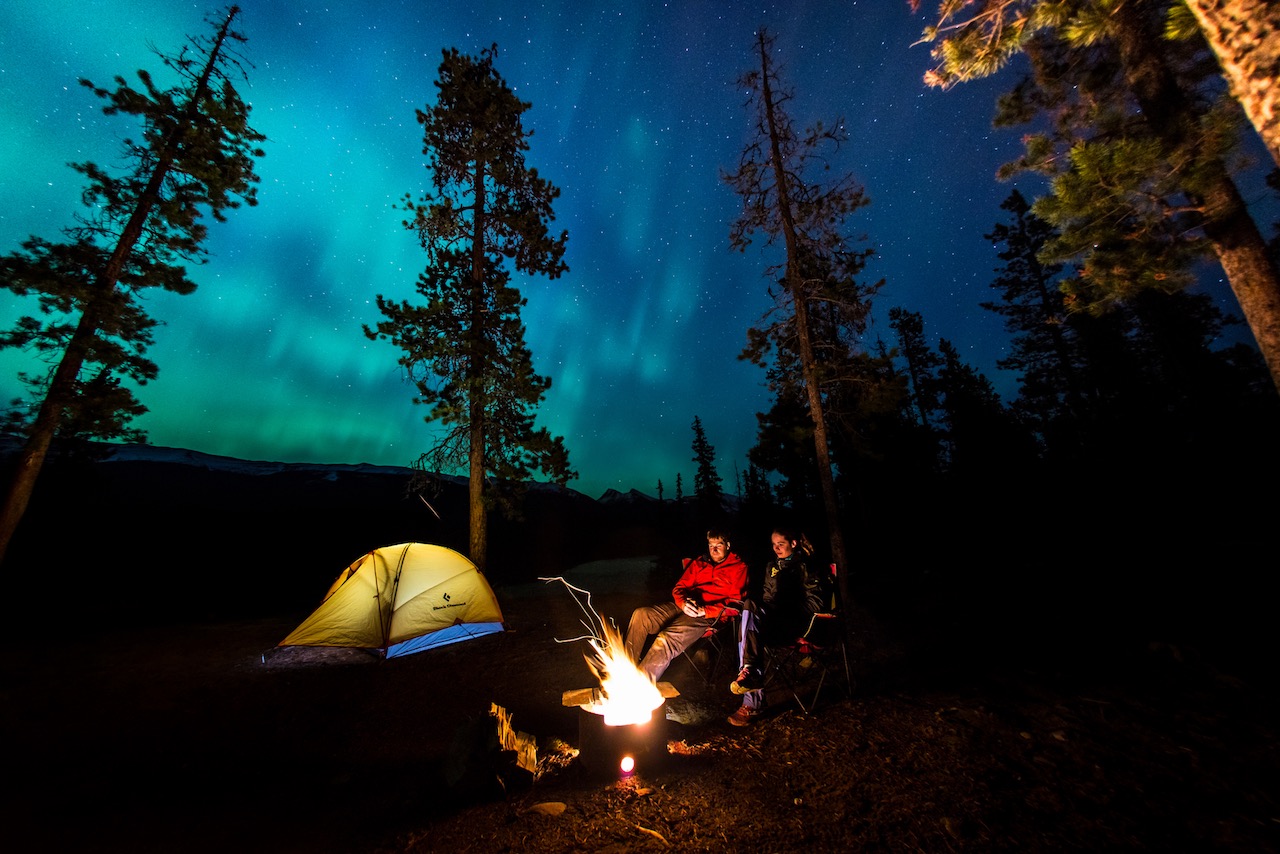
Photo: Ryan Bray for Parks Canada
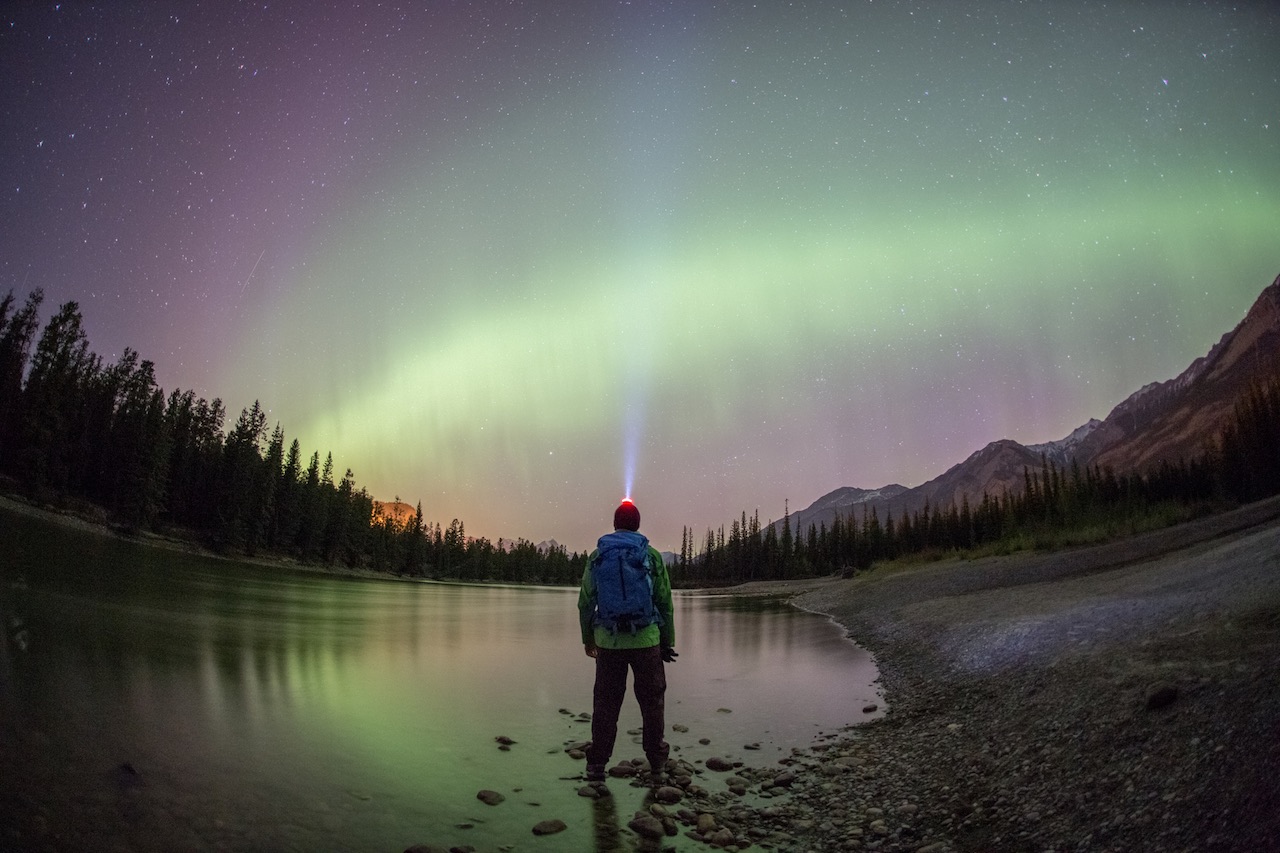
Photo: Ryan Bray for Parks Canada
Some of the best views in Jasper are up. That’s especially true from September to mid-May, when the Northern Lights can be seen pulsing in the night sky in every shade of green and pink. Follow sites like Aurora Watch to keep track of solar flares (giant explosions on the surface of the sun caused by sunspots grouping together); they’re what lead to really intense aurora. Head to Pyramid Lake, a 10-minute drive above town, or to Lake Edith to enjoy a starry — aurora-filled? — night undisturbed by city lights.
To learn more about the night sky, check out Edmonton’s TELUS World of Science, where you can experience what it’d be like to live on a spaceship, see the night sky through giant telescopes in the observatory, and check out actual moon rock from the Apollo Missions. Edmonton International Airport is where you’ll be flying into and out of on a visit to Jasper National Park, so the observatory is a natural stop either before or after your trip into the mountains. Also make sure to check out the city’s events calendar while you’re here — Alberta’s capital is known as Festival City, after all.
8. Maligne Lake
Find it: 1 hour from Jasper via Maligne Lake Rd

Photo: Ryan Bray for Parks Canada

Photo: Jeff Bartlett for Travel Alberta
Arriving at Maligne Lake in 1908, Mary Schäffer, first lady of exploration in the Canadian Rockies, wrote in her journal:
…there burst upon us that which, all in our little company agreed, was the finest view any of us had ever beheld in the Rockies… Yet there it lay, for the time being all ours — those miles and miles of lake, the unnamed peaks rising above us, one following the other, each more beautiful than the last.
That pretty much sums it up. Home to the view seen on a thousand Canadian calendar covers, Spirit Island — reachable on a 90-minute Maligne Lake Cruise or following eight hours return of hardcore kayaking — really is worth seeing in real life. For a relaxed hike from Maligne, take the 1.7-mile loop through forest thick with pine and spruce to Moose Lake, a peaceful tarn where you might just see some actual moose. For a half-day trip that could easily be extended to a full day of summitting, hike the Bald Hills. Or for one of the best backcountry hikes in the park, there’s the Skyline Trail — 27 miles of hiking through meadows and along ridges across the long crest of the Maligne Range. Trail runners do it in a day, but a relaxed 3-4 days might be more enjoyable.
9. Jasper Dark Sky Festival
Find it: Events in town and throughout the park
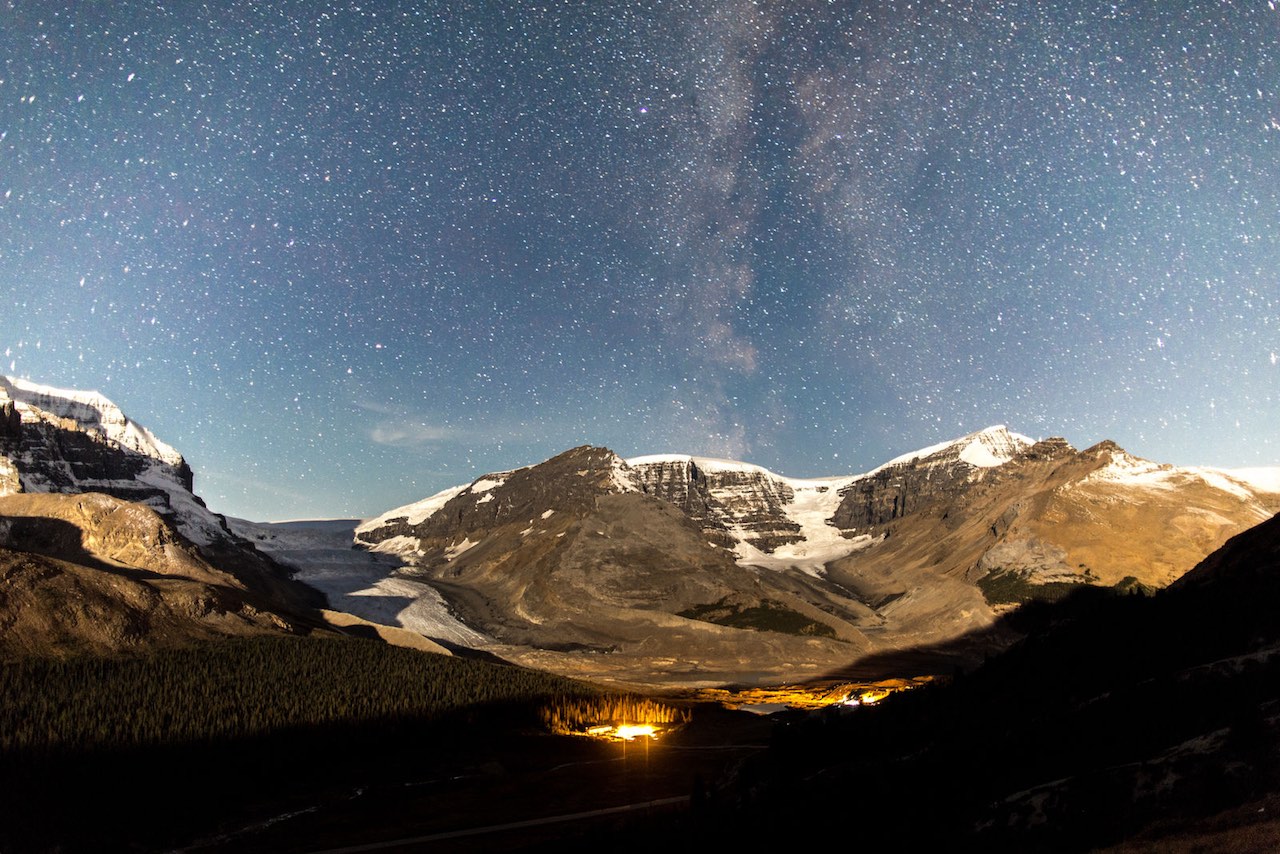
Photo: Ryan Bray for Parks Canada

Photo: Tourism Jasper
Coming into its sixth year, the Jasper Dark Sky Festival was launched to celebrate the Dark Sky Preserve designation Jasper received in 2011. Since then, it’s grown into a Dark Sky month with two weeks of brilliant programs. This year, the likes of Bill Nye, George Takei, and Canadian astronaut Jeremy Hansen gave talks, the Edmonton Symphony Orchestra played Vivaldi’s Four Seasons under the stars at the Fairmont Jasper Park Lodge, and the shores of Lake Annette turned into a stargazing dreamland — fairy lights strung between the trees and volunteers guiding visitors to the best of the night sky, like the Big Dipper’s double star and neighboring galaxy Andromeda.
With the glittering Milky Way overhead, I got goosebumps at this year’s event as I listened to an astrophysicist from the University of Alberta read scientist Carl Sagan’s “Pale Blue Dot” quote:
Look again at that dot. That’s here. That’s home. That’s us. On it everyone you love, everyone you know, everyone you ever heard of, every human being who ever was, lived out their lives…on a mote of dust suspended in a sunbeam.
10. Tonquin Valley
Find it: Trail begins 35 minutes from Jasper via the Icefields Parkway and 93A
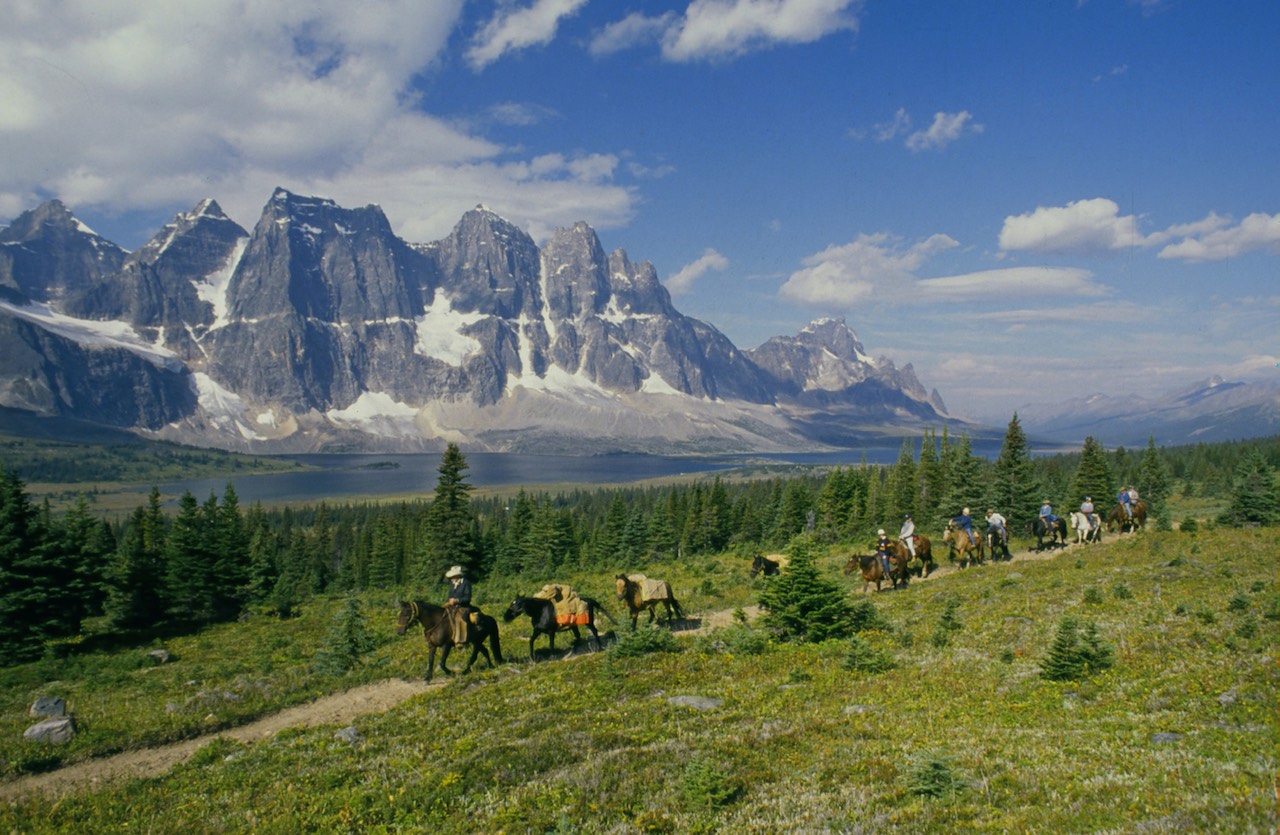
Photo: Tourism Jasper

Photo: Kathmandu for Travel Alberta
One of the most popular and most accessible backcountry hikes in Jasper National Park, Tonquin Valley is a three-mile pass whose crest cradles the beautiful Amethyst Lakes. Surrounded by castellating peaks — the Ramparts — whose towers First Nations believed were inhabited by supernatural beasts, this is one of the most beautiful valleys anywhere. Two trails will get you there — the shortest runs from Cavell Road along the Astoria River, while the more scenic starts at Marmot Basin Road. There are multiple backcountry camping spots around Amethyst Lakes, and two lodges for hikers and horseback riders.
My partner and I hiked the Tonquin this September, and were totally floored by its beauty as we descended to Surprise Point campground for the night. We’d just set up camp and were heating dinner under the shelter of some pines when we heard a snuffling behind us. It sounded like no animal I’d heard before. “Oh no,” I said, panicking. “Is that the noise bears make when they’re angry?” I peeked past the trees. It was a glorious male caribou with a full white beard. He was probably the most handsome thing I’ve ever seen. In the morning when we were leaving camp, we saw a whole caribou family. It was amazing, the kind of unforgettable moment that seems to happen all the time in Jasper.
11. Mount Edith Cavell
Find it: 40 minutes from Jasper via the Icefields Parkway and 93A
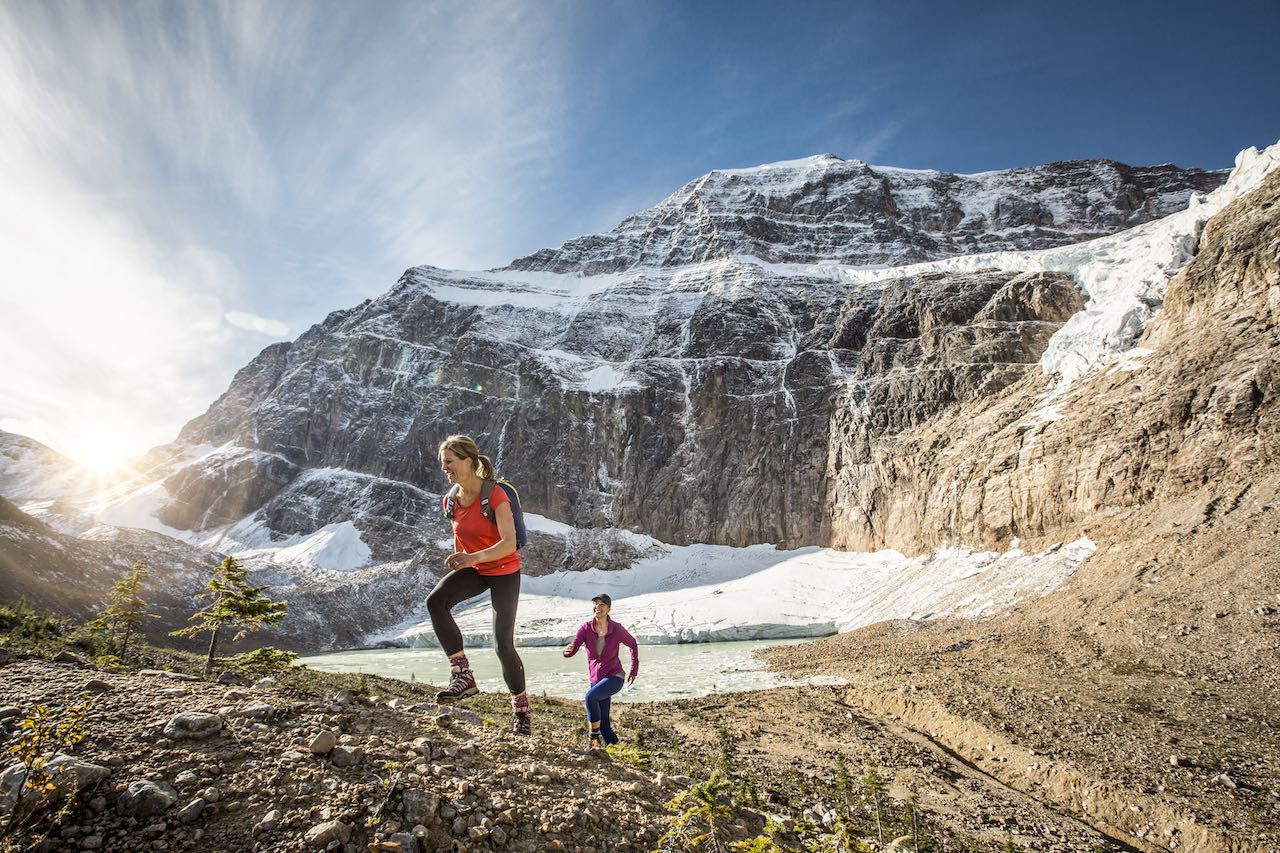
Photo: Noel Hendrickson for Travel Alberta
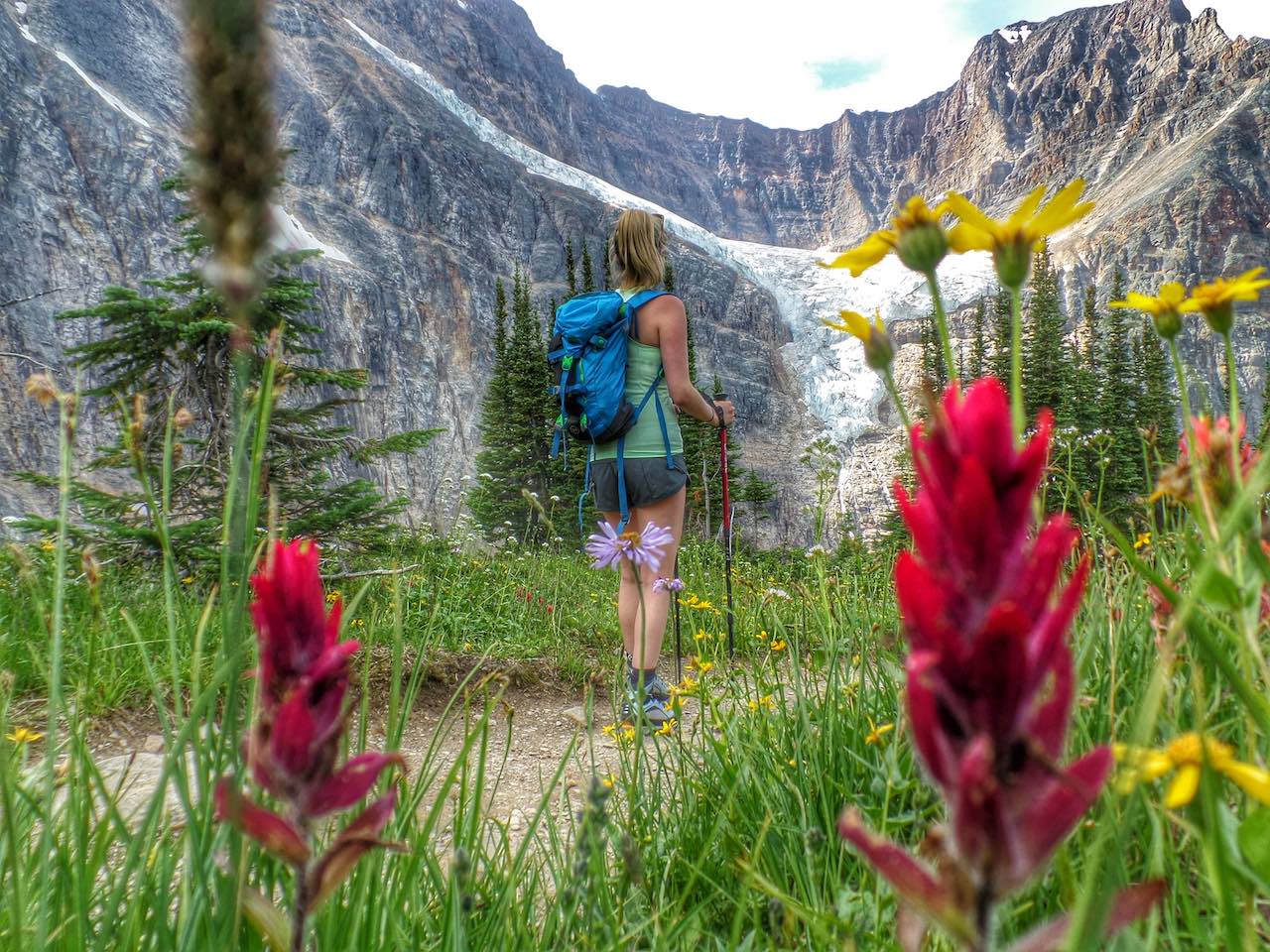
Photo: Kurt Morrison for Travel Alberta
Mount Edith Cavell is Alberta’s most prominent peak that’s entirely within the province. Here you’ll see two glaciers up close (Angel and Cavell), an opaque green pond full of drifting icebergs, mountain faces so sheer you’ll get palpitations of joy if you’re a climber…and to see all this you barely have to leave your car. The first time I came here I felt guilty that I was being rewarded with such beauty following only a ten-minute walk.
Edith Cavell’s accessibility means that, at least in summer, you likely won’t get total peace and quiet here unless you come early morning or late evening. Whatever time you arrive, look for marmots and pikas among the moraine. If you have a bit more time, make the half-day trip up to Cavell Meadows and picnic among the moss campion and white mountain avens against the backdrop of Angel Glacier and Mount Edith.

